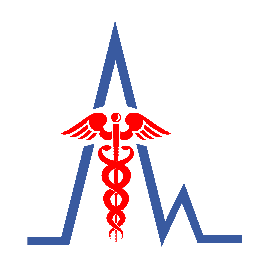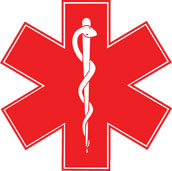Urology

Urology is the branch of medicine that looks at diseases of the urinary system in both sexes and the genitourinary system (urinary system plus genital organs) in males. That means kidneys, ureters, bladder, sphincter muscles and urethra in both sexes’ and the male genital organs (the penis, scrotum and prostate gland) in males.
We always try to help you with rapid accurate diagnosis and immediate effective treatment with its State Of The Art Infrastructure for a wide range of urological and genital problems for both sexes. We focus on Non Invasive and minimally invasive treatments so that we can give you best possible result with the minimum amount of discomfort.
Treatments in Urology
Kidney Stones
Kidney stones are urinary disorders that occur when salt or chemicals in the urine form crystals. These crystals block the flow of urine and can lead to serious complications including infection, kidney damage or even kidney failure. Kidney stones are made of various types of chemicals including calcium, phosphate and oxalate.
This urinary disorder affects more men than women between the ages of 20 and 40. Different types of kidney stones are made of different chemicals, and these include:
- Calcium oxalate stones or calcium phosphate stones
- Cystine stones
- Struvite stones
- Uric acid stones
Causes of Kidney Stones
A kidney stone occurs when:
- The urine has little or none of the substances that usually prevent these minerals from becoming crystals.
- The urine contains more minerals (calcium, oxalate, phosphate, uric acid or cystine) than it can dilute.
- There is the presence of other conditions like cystic kidney diseases, urinary tract infections, and some metabolic disorder.
- In addition, there are various risk factors that can increase the chances of developing kidney stones:
- Dietary factors include low intake of fluid, and high intake of salts, oxalate-rich foods (eg. peanuts, almonds, strawberries, tea and coffee) and purine-rich foods (eg. organ meats, shellfish)
- Environmental factors like living in a hot climate which causes excessive sweating, and having a low fluid intake, which leads to reduced urine volume and increased levels of minerals in the urine
- Genetic factors including a family history of kidney stones
Symptoms
- Excruciating pain that comes in waves from one or both sides of the lower back
- A stomach ache that doesn’t resolve itself
- Having blood in the urine
- Having frequent urges to urinate but producing very little urine
- Nausea, vomiting
- Fever, chills
- Foul-smelling and/or cloudy urine
Kidney stones tend to recur.
Treatment
There are different treatment options available to treat kidney stones. Your doctor will assess your condition and suggest the appropriate treatment for you, depending on the size and type of your kidney stone(s).
If your kidney stones are small:
- No treatment is needed. With plenty of water, the stones may eventually pass out in the urine
- Pain killers may be prescribed to ease any pain during the passing of the stones
If your kidney stones are too large to pass on their own, your doctor may suggest a few options for kidney stones removal. These options include:
- Extracorporeal shock wave lithotripsy (ESWL) – a non-invasive treatment that sends shock waves through the skin to break down the stone into tiny fragments and dust to be flushed out in the urine
- Medication – to help break down the stones. Specific type of medication depends on the type of kidney stones
- Percutaneous nephrolithotripsy (PCNL) – a surgical procedure that involves making a small cut in the back to allow a special instrument (nephroscope) to be inserted into the kidney to locate and remove the stones
Ureterorenoscopy (URS) – a surgical procedure where an endoscope (thin, flexible tube with a camera at the end) is inserted through the urethra, into the bladder and to the kidney to where the stone is located. The stones are then broken down and removed.
Bladder Stones
What are Bladder Stones?
Bladder Stones also known as vesical calculus are crystallized minerals that form in the bladder. When urine is not completely emptied. If urine sits in the bladder for a long enough time, minerals in the urine start to crystalize and develop into bladder stones.
Symptoms
- Urinary abnormalities, similar to the symptoms of cystitis, such as frequent urination, pain or burning during urination, or the presence of blood in the urine, etc.
- Inability or difficulty urinating, or interrupted urine flow.
- The presence of small, gravel-like stones mixed in with urine.
- Stones may scrape against the wall of the bladder or urethra, causing a urinary tract infection, as a result, patients may develop a fever.
Treatment
In the case of very small stones, the doctor may start by having the patient drink plenty of water, so stones can be passed naturally. However, drinking water does not suffice, the removal of stones may be carried out by one of the three following procedures:
- Cystolitholapaxy – A cystoscope is inserted into the urethra to break up the stones into smaller fragments, which can then be removed by the cystoscope.
- Extracorporeal Shock Wave Lithotripsy (ESWL) – This procedure uses sound waves to target kidney stones, causing stones to fragment and break into “stone dust”, small enough to pass through urination.
Surgical Removal – Surgery is required for jackstones (jackstone calculi), stones that have the specific appearance of radiating spicules, or stones that are abnormally large. These kinds of stones are impossible to remove through other methods.
Prostate Care
Over half of all men are affected by prostate problems at some point in their lives, with illnesses ranging from enlarged prostate to prostatitis to prostate cancer. All of these disorders can be uncomfortable, painful and even life threatening. With a wide range of treatment options to cover all stages of disease, our urologists bring you relief using drug therapy, minimally invasive laser treatment and surgery.
What is Benign Prostatic Hyperplasia (BPH) or Prostatic Enlargement?
Benign prostatic hyperplasia (BPH) is a non-cancerous swelling of the prostate gland. It is a common urological disorder in men over 50 years old. This swelling of the prostate causes the urethra, the tube that passes the urine out of the penis, to be squeezed and narrowed. This blocks the flow of urine out of the bladder and more pressure is needed to pass urine.
The bladder starts to contract (tense) even when it is not completely full, and eventually loses its ability to empty itself. The symptoms of BPH are linked with the narrowing of the urethra and the incomplete emptying of the bladder.
Symptoms
Common symptoms of BPH include:
- Blood in the urine
- Greater pressure and straining needed to begin urinating
- Hesitant and interrupted urination
- Sensation that the bladder is not completely emptied after urination
- Sudden inability to urinate (acute retention of urine)
- Sudden urgent need to urinate
- Urinating more frequently, especially at night
- Urine leakage
Treatments of BPH
Several treatments are available for BPH. Your doctor will evaluate your condition and suggest the most appropriate treatment, depending on your age, the severity of BPH, and your general health. The treatment options include:
- Drug treatment – includes 2 broad categories of medication:
- Drugs that relax the prostate to reduce the blockage of the bladder opening
- Drugs that block the production of the male hormone (DHT) which is involved in prostate enlargement
- Surgical treatment to remove the parts of the swollen prostate that are pressing against the urethra. Different surgical methods can be used:
- Open surgery is used when the prostate is too large
- Transurethral resection of the prostate
- Laser Surgery
- Holmium Laser Enucleation of the Prostate (HoLEP)
- TURP
What is TURP?
TURP is surgery to remove all or part of the prostate gland. It is most common surgical procedure to remove BPH a non-cancerous growth of prostate.
How is TURP done?
Transurethral resection of the prostate takes less than 90 minutes. A general or regional anesthesia may be used. During the procedure the surgeon inserts a thin tube-like telescope called a resectoscope into the penis through the urethra and up to the prostate gland. An electrical loop at the end of the scope is used to remove obstructing prostate tissue and seal blood vessels. The area then is irrigated and all tissue is removed. A hospital stay of three days is normally required during which time a catheter will remain in place to remove urine and any remaining debris from surgery.
- HoLEP
What is HoLEP?
Holmium Laser Enucleation of the Prostate (HoLEP) Holmium laser enucleation of the prostate (HoLEP) is a treatment for men with benign prostatic hyperplasia (BPH). The laser surgery removes blockages of urine flow. This treatment is done without any incisions on the body. The operation, on average, takes 45-90 minutes, depending on the size of your prostate.
Is HoLEP better than TURP?
Patients undergoing HoLEP benefit from significantly shortened catheterization times, decreased length of hospital stay (LOS), and fewer serious post-operative complications. Patients undergoing HoLEP generally have fewer chance of recurrence too.
Bladder Cancer
What is Bladder Cancer?
Bladder cancer occurs when the cells lining the inner wall of the bladder grow and multiply out of control until they become a cancerous cells- a malignant tumour. In aggressive cases cancer cells can spread to the deeper layers of bladder wall or the other organs.
Types of Bladder Cancer
There are many different types of bladder cancer, which are classified according to the type of cell in which the cancer originated. The most common type, accounting for over 90 percent of bladder cancer cases, is known as transitional cell carcinoma or urothelial carcinoma, which is a cancer that develops from the cells of the bladder lining. Another type of bladder cancer, squamous cell carcinoma, is found in only 4-5 percent of cases. There are also rarer types of bladder cancer as well.
Symptoms
Common symptoms include:
- Hematuria (blood in the urine) is the most common symptom of bladder cancer; usually painless.
- Abnormal bladder habits such as pain during urination, frequent urination, burning,
- Irritation, or urinary incontinence.
- Symptoms caused by cancer cells spreading to other organs such as, lower back pain (on either side of the body), bone pain, enlarged lymph nodes, swollen feet, fatigue, lack of appetite, and weight loss.
Stages
Bladder cancer is divided into 4 stages:
- Stage 1 – This is the beginning stage. Cancer at this stage occurs in the bladder’s inner lining, but has not yet invaded the bladder wall.
- Stage 2 – Cancer cells have invaded the bladder wall, but the cancer is still confined to the bladder.
- Stage 3 – The cancer cells have spread through the bladder wall to surrounding tissue.
- Stage 4 – Cancer cells have spread to the lymph nodes and other organs such as bones, liver, or lungs.
Treatment
Treatment options for bladder cancer depend on a number of factors, including the type, stage, and aggressiveness of the cancer, as well as the overall health of the patient.
Surgical Treatment
- A transurethral resection of bladder tumor (TURBT), is a standard surgical procedure for non-muscle invasive bladder cancer generally done in early stage bladder cancer, both to diagnose and remove cancerous tissue. During surgery, a cystoscope (endoscope) is directed into the bladder through the urethra. A resectoscope is then used to remove the tumor, as well as burn away any remaining cancer cells.
In cases where the cancer has invaded the layers of the bladder wall, or has reached stage 2 or higher, the doctor may consider surgery to remove the entire bladder (combined with chemotherapy and/or radiation therapy) to reduce the chances of spread and recurrence of the cancer.
In a Radical Cystectomy, the entire bladder is removed, as well as its surrounding lymph nodes and other structures adjacent to the bladder that may contain cancer. In men, a radical cystectomy typically includes removal of the prostate and seminal vesicles which are behind the bladder and adjacent to the prostate. In women, it involves removal of the uterus, fallopian tube, ovaries, and part of the vagina.
If the entire bladder is completely removed, a new urinary tract must be constructed for urine to exit the body. Options include:
- Ileal Conduit Urinary Diversion
- Continent Urinary Diversion (Indiana Pouch)
- Orthotopic Continent Urinary Diversion (Neobladder)
Chemotherapy
Radiation therapy
Prostate Cancer
What is Prostate CA:
Prostate cancer is an abnormal growth of tissue in the prostate, which is a walnut-sized gland that produces semen. Most prostate cancers grow slowly, but they sometimes spread to other parts of the body.
Symptoms
There may be no symptoms of prostate cancer. Many men who reach the age of 80 years will have prostate cancer. As most prostate cancers grow slowly, many men will die of other ailments of old age without ever knowing that they have prostate cancer. If you do have symptoms, they are likely to be:
- Difficulty in passing urine
- Only passing a trickle of urine
- Less force in the stream of urine
- Burning or pain when urinating
- Not being able to urinate
- Blood in your urine or semen
- Pelvic, back or hip pain
- Weight loss
Treatment
As prostate cancer develops slowly, and treatment may have risks, doctors often simply monitor the tumour rather than treat it immediately. Treatment depends on your symptoms, age and general health, and on the type and stage of the cancer.
Treatments include
- Surgery to remove the prostate — side effects of urinary incontinence and impotence may occur
- Hormone therapy to counter the effect of testosterone
- Chemotherapy to relieve the symptoms of prostate cancer
- Radiation therapy (high-energy x-rays) to kill the cancer cells
- Radioactive implants (brachytherapy) to deliver a high dose of radiation
If you are older than 50 years, you may discuss the possibility of prostate cancer screening with your doctor.
Orthopaedic team of Experts
| Name | Credentials |
| Dr. RANJAN KUMAR DEY | MBBS, MS, M.CH .(URO) |
| Dr. B SHIVA SHANKAR | MBBS, MS, M.CH .(URO) |
| Dr. NABANKUR GHOSH | MBBS, MS, M.CH .(URO) |
| Dr. SANDEEP GUPTA | MBBS, MS, M.CH .(URO) |
| Dr. ANIMESH KUMAR DAS | MBBS, MS, M.CH .(URO) |
| Dr. DEBASISH MAITY | MBBS, MS, M.CH .(URO) |
| Dr. SUNIRMAL CHOWDHURY | MBBS (CAL), DA (CAL), MS (PGIMER, CHANDIGARH), M. CH (URO) (PGIMER, CHANDIGARH) |
| Dr. NILANJAN MITRA | MBBS, MS, M.CH (URO) |
Facilities in Urology
ESWL - Urology
Extracorporeal shock wave lithotripsy (ESWL) uses shock waves to break a kidney stone into small pieces that can more easily travel through the urinary tract and pass from the body. See a picture of ESWL. Patient lie on a cushion, and the surgeon uses X-rays or ultrasound tests to precisely locate the stone
Machine used – Siemens Modularis Variostar (Modularis covers virtually all urological procedures – and even more. Using Modularis Variostar we can set the shock wave head in different angles – enabling doctor to choose the therapy position he needs. It is equipped with electromagnetic shock wave system.
HoLEP - Urology
Machine used – Lumenis Versa Pulse Power Suite 100W-The Versa Pulse PowerSuite 100W is high-watt holmium laser solution and a pioneer in its field. It has a successful clinical track record of over 15 years in treatment prostate enucleation (HoLEP) and stone lithotripsy. It provides-
- Avoid excess operation time
- Low reoperation rates, as mentioned in the AUA guidelines for BPH
- Compared with alternative treatment options for BPH, HoLEP has a major advantage in efficacy and safety
IVP - Urology
An Intravenous Pyelogram (IVP) is an X-ray test that provides pictures of the kidneys, the bladder, the ureters, and the urethra (urinary tract). An IVP can show the size, shape, and position of the urinary tract, and it can evaluate the collecting system inside the kidneys.
Machine Used – Siemens MP 450
USG KUB - Urology
KUB ultrasound is a lower abdominal ultrasound that is done to assess the urinary tract. The kidneys, urinary bladder, and ureters are scanned in females while the seminal vesicles and prostate gland are usually also included in males.
Machine Used – Philips Affinity 70
Renal Artery Doppler - Urology
The Renal Artery Doppler Ultrasound uses high frequency sound waves to assess the blood flow into and out of the kidneys. If you have uncontrolled high blood pressure, your doctor may request this exam to determine if there is a narrowing in the blood vessels leading to each kidney from the aorta.
Machine Used – Philips Affinity 70
CT KUB - Urology
A computerized tomography (CT) scan of the kidneys, ureters and bladder (KUB) is referred to as a CT KUB. The purpose of the scan is to obtain images from different angles of the urinary system and surrounding structures, which encompasses the area from the superior poles of the kidneys down to the pubic symphysis.
Machine used – GE Brightspeed Elite Select. This test is done at our diagnostic branch.
CT Renal Angio - Urology
A CT renal angiogram is an imaging test to look at the blood vessels in your kidneys. It can be used to look at the ballooning of a blood vessel (aneurysm), narrowing of a blood vessel (stenosis), or blockages in a blood vessel.
Machine used – GE Brightspeed Elite Select. This test is done at our diagnostic branch.
MRI Prostate - Urology
Magnetic resonance imaging (MRI) of the prostate uses a powerful magnetic field, radio waves and a computer to produce detailed pictures of the structures within a man’s prostate gland. It is primarily used to evaluate the extent of prostate cancer and determine whether it has spread.
Machine used – GE Signa HdXT 1.5T. This test is done at our diagnostic branch
DTPA scan - Urology
Renal DTPA scan is a process for diagnosis and evaluation of kidney functioning. It involves intravenous administration of radiopharmaceutical material to assess the drainage pattern of kidneys and to find out if any area is not functioning properly. It is available in our Diagnostic division.
Machine Used – Siemens Symbia T
Whole Body Bone Scan - Urology
A bone scan shows up changes or abnormalities in the bones. You might have a bone scan to find out if prostate cancer has spread to the bone. A bone scan is also called a radionucleotide scan, scintigram or nuclear medicine test.
Machine Used – Siemens Symbia T
Whole Body PET CT - Urology
PET CT is used in detection of primary and secondary metastasis. Recently PSMA PET is the investigation of choice FOR CA prostate.
Machine Used – Siemens Biograph mCTx
Uroflowmmetry - Urology
Uroflowmetry is a test that measures the volume of urine released from the body, the speed with which it is released, and how long the release takes.








